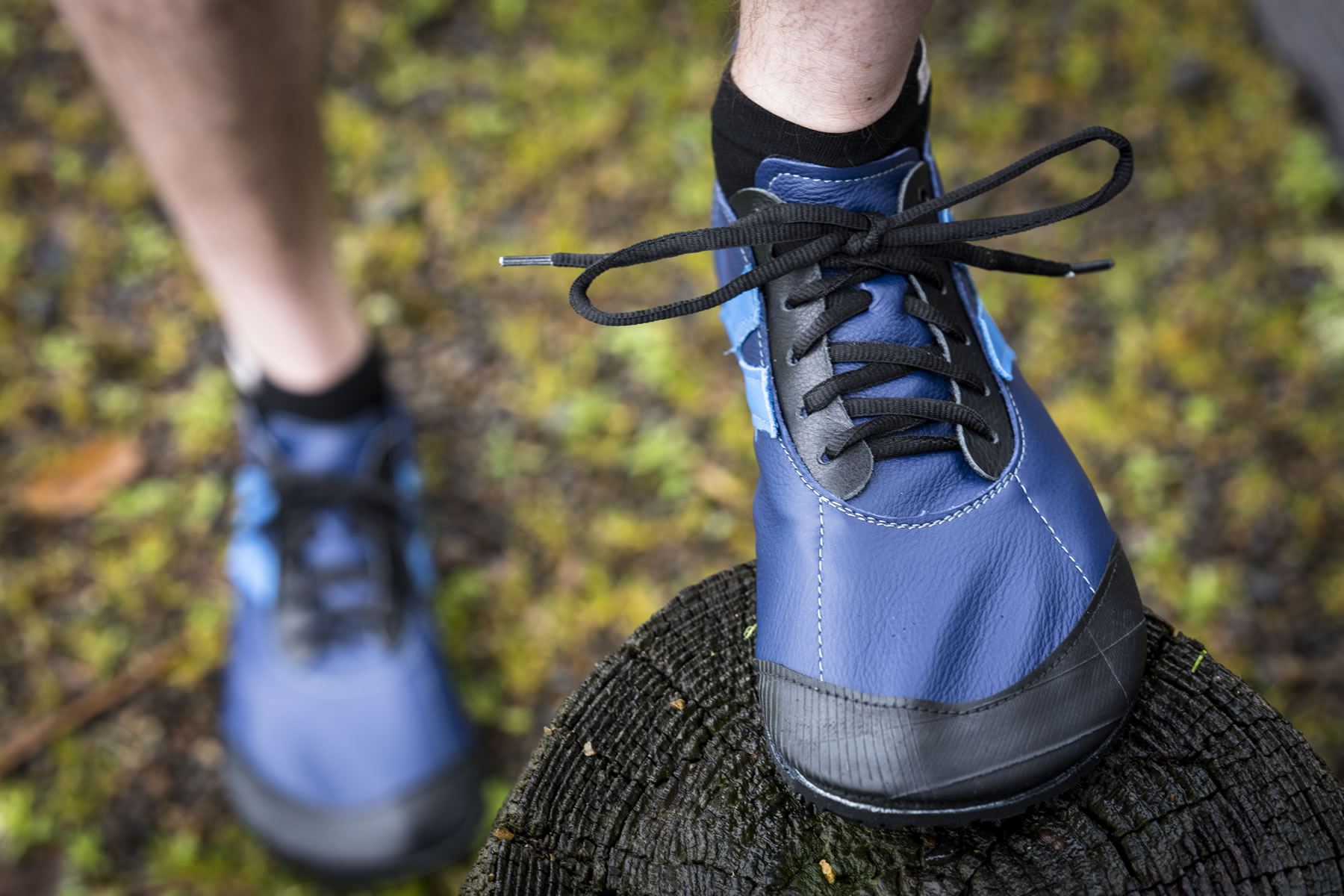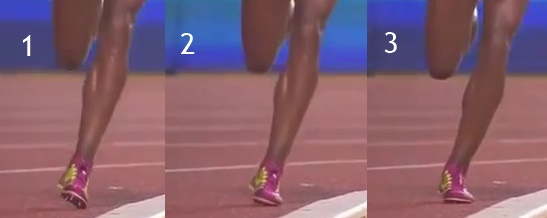Is forefoot running more economical than heel strike running? One reason forefoot running conserves more energy is the muscles work less to absorb impact which saves energy on muscle tuning (shock attenuation) as compared with heel strike running. The radical difference in impact force reduction in forefoot running partly comes from the landing configuration of the foot at touchdown which involves initial ground-contact on the outer-side of the forefoot (1) ~the widest part of the foot to contact the ground. This is followed by the rest of the foot flattening down to the ground, then the heel fully drops down (2-3). Landing this way during running contributes a greater extent to producing less burst of high jarring impact as compared with landing heel-first (heel strike) which generates 3 types of forces at touchdown: collision, compressive and jarring forces. Ultimately, landing with a forefoot strike during running has a significant smoothing effect on the roads, regardless of speed and surface hardness, resulting in a quieter, more of a low amplitude impact that doesn’t require a lot of energy for muscle tuning to cancel out. Read more here! 
Bretta Riches
BSc Neurobiology; MSc Biomechanics candidate, ultra minimalist runner & founder of RunForefoot. I was a heel striker, always injured. I was inspired by the great Tirunesh Dibaba to try forefoot running. Now, I'm injury free. This is why I launched Run Forefoot, to advocate the health & performance benefits of forefoot running and to raise awareness on the dangers of heel striking, because the world needs to know.
Latest posts by Bretta Riches (see all)
- Heel Strike Running Causes Slipped Discs - 25/04/2024
- How to Train Yourself to Not Heel Strike When Running - 24/04/2024
- Cushioned Running Shoes Found to Be Bad for Ankles - 23/04/2024

